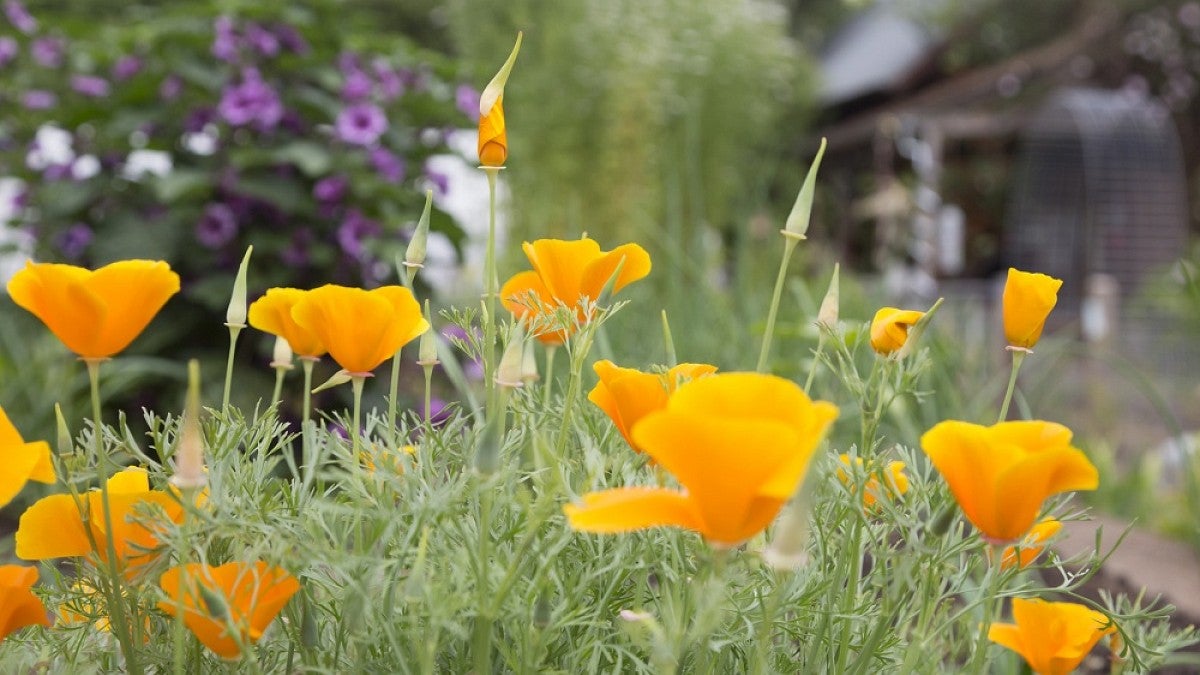The crowds on the University of Oregon campus calm when Ducks fly home for the summer leaving the remaining students, staff and community members to enjoy campus in a slower way than normal.
Historical displays, fountains, artwork, courtyards and more can be easily forgotten amid the buzz of a busy school year. This list shines a light on some of those scattered gems found around campus.
While the locations may not be hidden, the details within them can still inspire the imagination. The landmarks on this list are just the start of what’s to discover at the UO, so don’t be afraid to get out discover your own hidden gems on campus this summer.
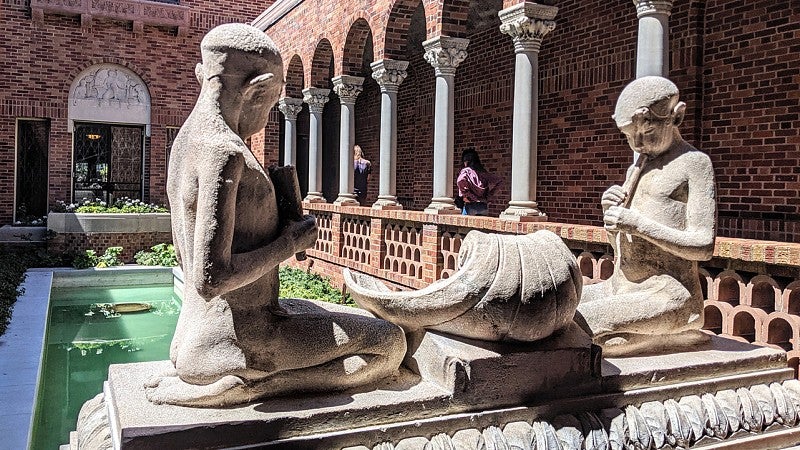
The Prince Lucian Campbell Memorial Courtyard
The Jordan Schnitzer Museum of Art is one of the largest and better-known hidden gems on campus and home to a variety of art and adventure. In addition to seeing classic works from artists including Pablo Picasso, Edouard Manet and Henri Matisse, the latest exhibit offers guided audio art talks by curators at various displays using just your cell phone.
In addition to the art indoors, the outdoor Prince Lucian Campbell Memorial Courtyard, renovated in 2009, is a quiet spot for contemplation. This small but elegant reflecting pool and courtyard is easily missed during a quick trip to the museum.
Also hiding within the building is the Marché Museum Café, home to soups, salads, sandwiches and coffee; patrons at the museum are eligible for $1 off their order at the cafe with proof of museum admission. To learn more about the museum or the hidden gems within it, visit its website.
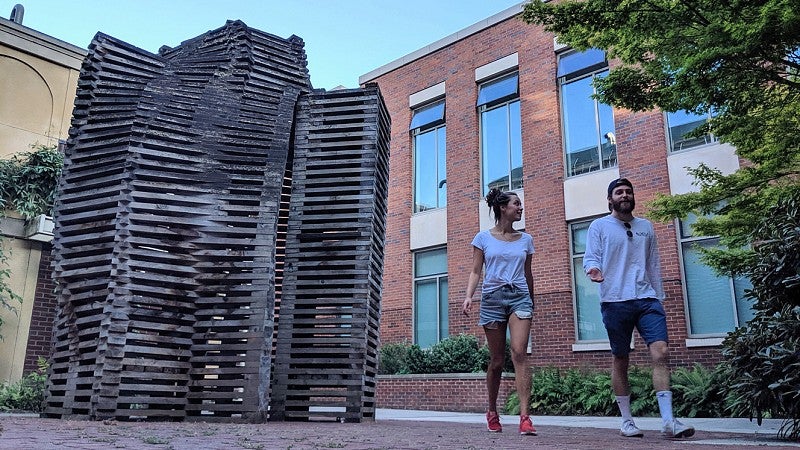
House for Phineas Gage
The John Straub Memorial Hall is home to the psychology and linguistics departments as well as a number of artistic and historic displays. Home to the psychology department since 1973, the halls of Straub are decorated with tales of psychology from past to present.
Secluded in the center of the building sits the "House for Phineas Gage," a wood sculpture made entirely of incense cedar by artist James Harrison in 2003. The wood was harvested from a local, sustainably managed forest certified by the Forest Stewardship Council. Inside the wood tower are two seats and enough room to enjoy lunch or read a book. To learn more about Straub Hall visit the Architecture of the University of Oregon website.
‘Cascade Charley’ and the Science Walk
This secluded plaza across from Cascade Hall is home to the “Cascade Charley” outdoor sculpture as well as Scott Wylie’s Science Walk, which features a scavenger hunt of more than 50 rocks and minerals. At the fountain, visitors can enjoy rushing waters or shimmering stones by simply looking around the courtyard.
The space, created in 1991, blends science and art to create a comfortable and interactive outdoor plaza. A map of the Science Walk and the rocks along it are provided by the Department of Earth Sciences.
Also remember to stand on the various blue dots in the courtyard to hear how the architecture affects sound from the water feature.
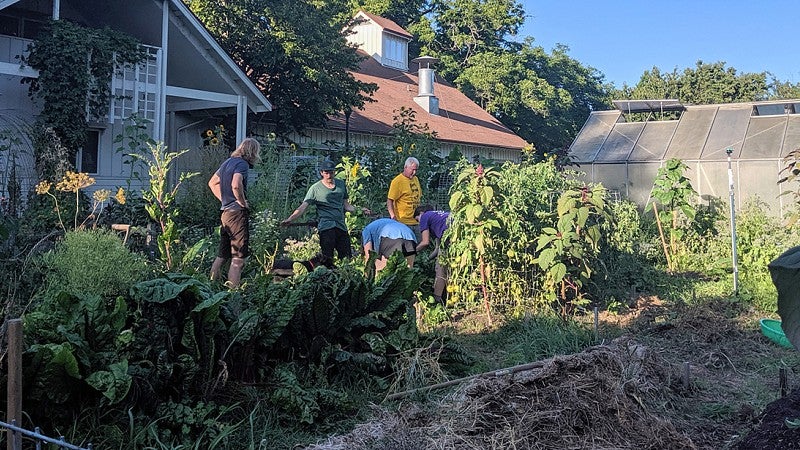
The Urban Farm
Founded by students in 1976, the farm serves as a model for alternative urban land use where people grow food, work together, take care of the land and build community. Found at the end of Agate Street between Franklin Boulevard and Millrace Drive, the Urban Farm has helped students learn new things about farming as well as provide an enjoyable public space for more than 40 years.
The farm is a part of the Department of Landscape Architecture and is used to teach classes about farming and urban planning. Volunteers are welcome to help work on the farm every Saturday from 10:30 a.m. to 12:30 p.m. All community members are encouraged to enjoy the scenery in the garden, but remember, if you didn’t grow it, don’t pick it. Learn more on the Urban Farm website.
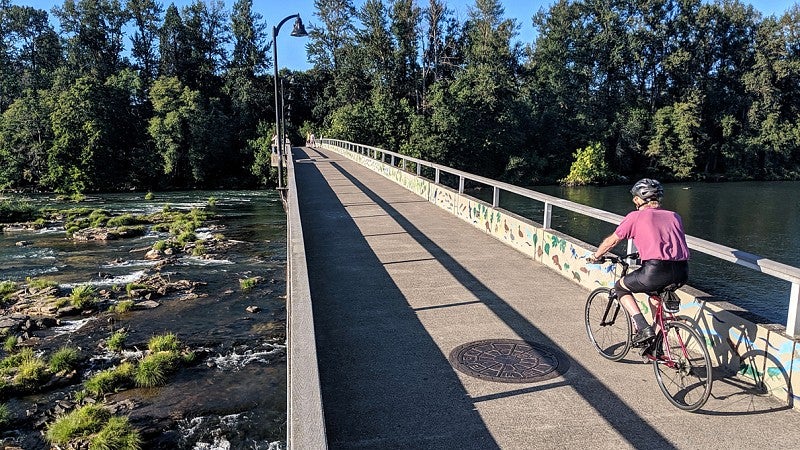
The David and Lynn Frohnmayer Pedestrian and Bicycle Bridge
This not-so-hidden gem stands as one of the icons of the UO, best known for transporting Duck fans to and from Autzen Stadium over rushing waters and under towering trees. While it may seem off campus, class field trips and the nearby research labs serve as a reminder of just how close campus is to the Willamette River and its natural scenery.
The bridge may commonly be known as the Autzen footbridge, but it was officially renamed the David and Lynn Frohnmayer Pedestrian and Bicycle Bridge in 2009 after the former UO president and his wife. However, crossing the bridge is just the start.
Explorers can go on to follow more than 12 miles of nature trails as part of the Ruth Bascom Riverbank Path System. Keep an eye out for cairns — well-balanced rocks stacked by humans — in the center of the river, no doubt built by summer explorers looking to beat the heat.
Honorable mentions
Unfortunately, this list can’t be exhaustive; however, here are some other hidden gems that are worth checking out on campus:
- The periodic table of the elements in Klamath Hall
- The busts of famous scientists outside Willamette Hall, including Albert Einstein, Marie Curie and Isaac Newton.
- The Washington hand press in Allen Hall.
- The Randall V. Mills Archives of Northwest Folklore in Prince Lucien Campbell Hall.
- The Museum of Natural and Cultural History.
—By Bryan Dorn, University Communications


